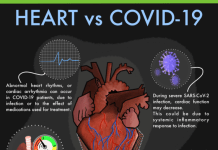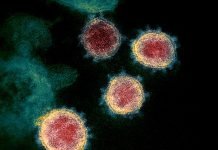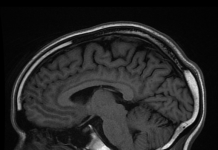Big Bang produced equal amounts of matter and antimatter which should have annihilated each other leaving behind an empty universe. However, matter survived and dominates the universe while antimatter vanished. It is thought that some unknown difference in basic properties between particles and corresponding antiparticles may be responsible for this. High precision measurements of fundamental properties of antiprotons have potential to enrich understanding of matter-antimatter asymmetry. It requires supply of antiprotons. Currently, CERN’s Antiproton Decelerator (AD) is the only facility where antiprotons are produced and stored. It is not possible to conduct high precision studies of antiprotons near AD due to magnetic field fluctuations generated by accelerators. Hence, transporting antiprotons from this facility to other laboratories is an imperative. At present, there is no suitable technology to do so. BASE-STEP is a step forward in this direction. It is a relatively compact device designed to store and transport antiprotons from CERN facility to laboratories at other locations for high precision studies of antimatter. On 24 October 2024, BASE-STEP conducted a successful technology demonstration using trapped protons as a stand-in for antiprotons. It transported a cloud of 70 protons locally in a truck. This was first instance of transportation of loose particles in a reusable trap and an important steppingstone towards creation of an antiproton-delivery service to experiments at other laboratories. With some refinements in procedures, antiprotons are planned to be transported in 2025.
In the beginning, the Big Bang produced equal amounts of matter and antimatter. Both are identical in properties, just that they have opposite charges, and their magnetic moments are reversed.
The matter and antimatter should have quickly annihilated leaving behind an empty universe however that did not happen. The universe now is totally dominated by matter while antimatter disappeared. This is thought that there is some unknown difference between fundamental particles and their corresponding antiparticles which may have led to survival of matter while antimatter was eliminated leading to matter-antimatter asymmetry.
According to CPT (Charge, Parity, and Time reversal) symmetry, which is part of Standard Model of particle physics, basic properties of particles should be equal and partly opposite to those of their corresponding antiparticles. High-precision experimental measurements of differences in the basic properties (such as masses, charges, lifetimes or magnetic moments) of particles and their corresponding antiparticles can be of help in understanding matter-antimatter asymmetry. This is the context of CERN’s Baryon Antibaryon Symmetry Experiment (BASE).
BASE experiment has been designed to investigate Proton Antiproton Symmetry by carrying out high-precision measurements of properties (such as intrinsic magnetic moment) of antiprotons with a fractional precision in order of part-per-billion. The next step is comparison of these measurements with the corresponding values for protons. For intrinsic magnetic moment, the entire process is based on measurements of the Larmor frequency and the cyclotron frequency.
Presently, CERN’s Antiproton Decelerator (AD) is the only facility where antiprotons are routinely produced and stored. These antiprotons need to be studied here at CERN’s facility however the magnetic field fluctuations generated by the accelerator at the site restricts precision of measurements of antiproton properties. Hence, the imperative to transport antiprotons produced at AD to laboratories at other locations. But antimatter is not easy to deal with as they quickly annihilate on coming in contact with matter. At present, there is no suitable technology to transport antiprotons to laboratories at other locations for researchers to conduct high precision studies. BASE-STEP (Symmetry Tests in Experiments with Portable antiprotons) is a step forward in this direction.
BASE-STEP is a relatively compact device designed to store and transport antiprotons from CERN facility to laboratories at other locations for high precision studies of antimatter. It is a subproject of BASE, weighs about a ton and is about five times smaller than original BSE experiment.
On 24 October 2024, BASE-STEP conducted a successful technology demonstration using trapped protons as a stand-in for antiprotons. It transported a cloud of 70 protons locally in a truck. This was first instance of transportation of loose particles in a reusable trap and an important stepping stone towards creation of an antiproton-delivery service to experiments at other laboratories. With some refinement in procedures, transportation of antiproton is planned in 2025.
PUMA (antiProton Unstable Matter Annihilation) is another experiment of similar nature but aimed at different objective. Like BASE-STEP, PUMA also involves preparation of a transportable trap to move antiprotons from CERN’s Antiproton Decelerator (AD) hall to its ISOLDE facility for use in study of exotic nuclear physics phenomena.
***
References:
- CERN. News – BASE experiment takes a big step towards portable antimatter. Posted 25 October 2024. Available at https://home.cern/news/news/experiments/base-experiment-takes-big-step-towards-portable-antimatter
- CERN. Technical Design Report of BASE-STEP. https://cds.cern.ch/record/2756508/files/SPSC-TDR-007.pdf
- Smorra C., et al 2023. BASE-STEP: A transportable antiproton reservoir for fundamental interaction studies. Rev. Sci. Instrum. 94, 113201. 16 November 2023. DOI: https://doi.org/10.1063/5.0155492
- Aumann, T., Bartmann, W., Boine-Frankenheim, O. et al. PUMA, antiProton unstable matter annihilation. Eur. Phys. J. A 58, 88 (2022). DOI: https://doi.org/10.1140/epja/s10050-022-00713-x
***
Related articles
- Why ‘Matter’ Dominates the Universe and not ‘Antimatter’? In Quest of Why Universe Exists (18 April 2020)
- Unveiling the Mystery of Matter-Antimatter Asymmetry of the Universe with Neutrino Oscillation Experiments (1 May 2020)
***




































